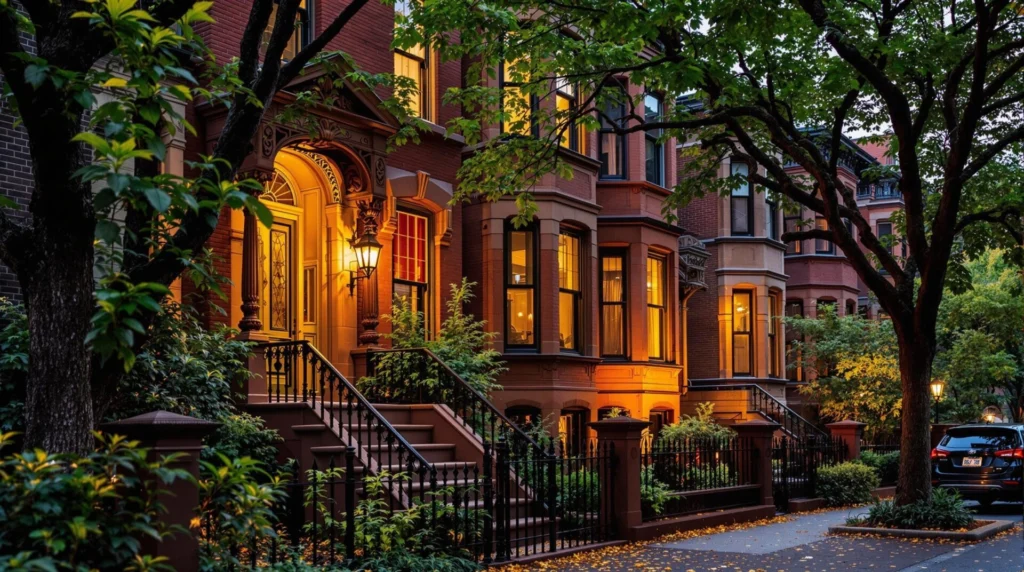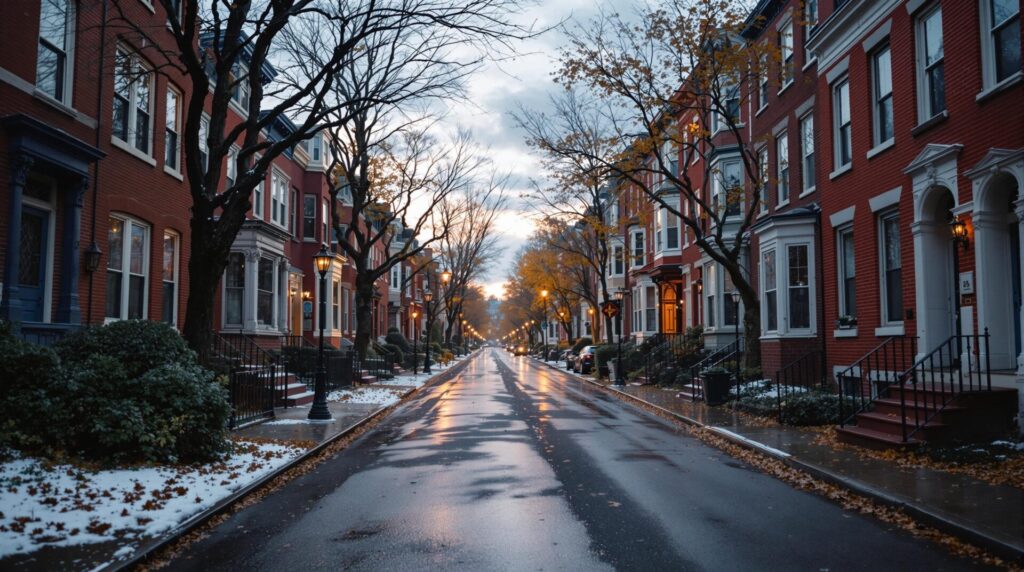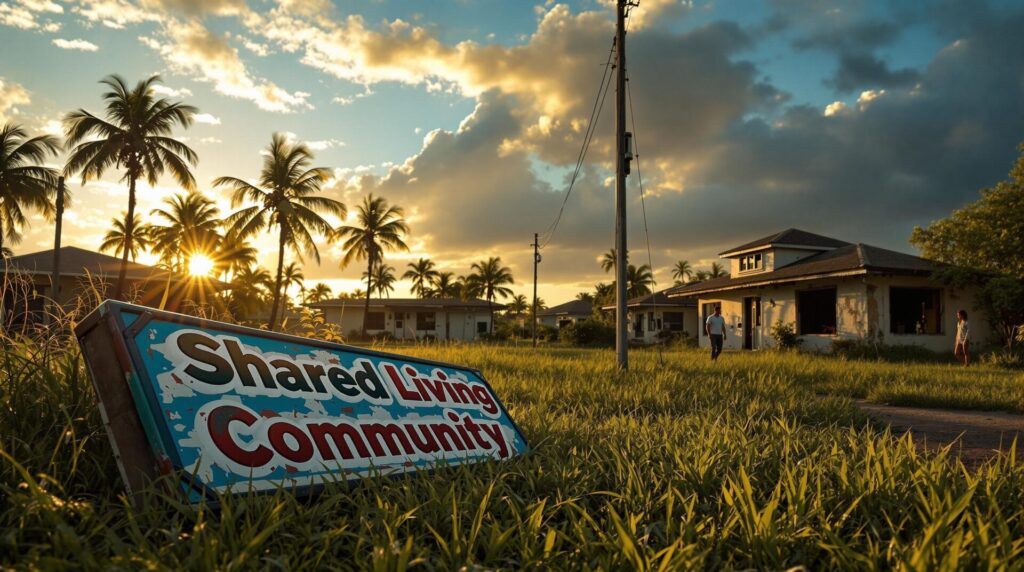Key Takeaways
- The decline of malls, driven by e-commerce, has led to their transformation into residential spaces.
- Mall-to-residential conversions breathe new life into communities by providing affordable housing and mixed-use developments.
- Adaptive reuse of malls is a sustainable approach that reduces environmental impact while meeting modern housing demands.
Introduction: Mall-to-Residential Conversions
You’re seeing a fascinating trend in real estate where empty malls are being transformed into bustling residential communities.
This shift stems from the decline of traditional malls due to e-commerce and changing consumer behavior.
By converting these vacant spaces into homes, developers address housing shortages and revive local economies.
These projects often include mixed-use features like retail and recreational areas, making neighborhoods more vibrant and connected.
Adaptive reuse is also eco-friendly, preserving materials and reducing waste.
If you’re curious about how these transformations benefit communities and the exciting potential they hold, there’s much more to explore on this topic.
Historical Context
Historically, malls were the bustling epicenters of suburban life, especially during the late 20th century. You’d find people flocking to these vibrant spaces for shopping, dining, and socializing.
They weren’t just places to buy things; they were community hubs. However, as time passed, the retail landscape began to shift—a phenomenon known as retail evolution.
The changes in consumer behavior and preferences played a significant role in this transformation.
You might remember how urban planning initially designed malls to cater to the growing suburban population, ensuring they were conveniently located and easily accessible.
Yet, as cities expanded and demographics shifted, the appeal of these once-thriving centers began to wane.
Urban planners and developers started noticing that many malls were struggling to keep up with the evolving retail environment.
With stores closing and foot traffic dwindling, it became clear that a new approach was needed. You can see how the focus started to shift from purely retail spaces to mixed-use developments, incorporating residential units to breathe new life into these areas.
This change not only revitalized the properties but also aligned with modern urban planning principles, emphasizing sustainability and community integration.
Rise of E-commerce
As malls began to lose their luster, another transformative force reshaped the retail landscape: the rise of e-commerce.
You’ve probably noticed how online shopping has revolutionized your shopping habits.
The convenience factor of browsing through virtual storefronts from your couch can’t be overstated.
This retail transformation has changed consumer behavior and how brands foster loyalty.
Consider these four key aspects of the e-commerce boom:
- Digital marketplace: Platforms like Amazon and eBay offer vast product selections, making it easy to find exactly what you need.
- Delivery services: Fast and reliable delivery options mean you can receive purchases quickly, often within days.
- Experiential retail: Many online retailers are enhancing their websites with interactive features, like virtual try-ons, to mimic in-store experiences.
- Brand loyalty: E-commerce platforms often have loyalty programs and personalized recommendations to keep you coming back.
These changes in the digital marketplace have made online shopping a dominant force.
You can easily compare prices, read reviews, and find deals without ever leaving home. This shift has fundamentally altered the traditional retail model, pushing malls to adapt or face obsolescence.
Understanding this transformation helps explain why malls are being repurposed into residential spaces.
Decline of Traditional Malls
You’ve probably noticed how e-commerce has taken a big bite out of traditional malls, causing many of them to lose foot traffic.
As more people prefer shopping online for convenience, these once-bustling centers are now facing increased vacancies and store closures.
This shift in consumer behavior has left many malls struggling to stay relevant, leading to a rise in empty spaces and a need for new purposes.
E-commerce Impact on Malls
The rise of e-commerce has dramatically reshaped the retail landscape, leading to the decline of traditional malls. Your shopping habits have evolved, shifting from in-store visits to digital shopping.
This shift in consumer behavior has forced malls to rethink their strategies.
To understand why traditional malls are struggling, consider these key points:
- Convenience Factors: Online shopping offers unmatched convenience—no need to drive, find parking, or deal with crowds.
- Online Competition: E-commerce giants like Amazon offer a vast selection and quick delivery, putting pressure on physical stores.
- Omni-channel Strategy: Successful retailers now blend online and in-store experiences, but many malls have been slow to adapt.
- Brand Loyalty and Experiential Retail: Customers crave unique mall experiences that go beyond mere shopping, such as entertainment and dining.
Digital shopping has become a cornerstone of the retail evolution, integrating seamlessly into your daily life.
While some malls have embraced experiential retail and in-store integration to remain relevant, many struggle to keep up.
The challenge lies in balancing online competition with local shopping needs.
Adapting to these changes requires a robust omni-channel strategy that fosters brand loyalty and meets new consumer expectations.
Changing Consumer Preferences
Many consumers now prefer the convenience of online shopping over traditional mall visits, fundamentally changing retail dynamics.
You’ve probably noticed how consumer habits have shifted dramatically. People now prioritize efficiency and variety, which online shopping readily offers.
This shift is not just about purchasing goods but also reflects broader lifestyle shifts.
As more people embrace urban living, there’s a growing demand for housing that supports modern, busy lifestyles.
You might find yourself valuing the proximity to work, social hubs, and amenities more than the traditional mall experience.
Such demographic trends indicate that housing preferences are evolving, with many favoring apartments and mixed-use developments over suburban homes.
Retail experiences are also transforming.
Consumers like you seek unique, personalized experiences rather than generic mall visits.
This change aligns with the community needs of today’s society, where market demands lean towards convenience and customization.
Ultimately, these changes in consumer habits and preferences reveal a significant transformation in how we live, shop, and interact with our environments.
Understanding these trends helps explain why many malls are being converted into residential spaces, meeting the new market demands efficiently.
Rise of Vacant Spaces
Witnessing the decline of traditional malls has become a common sight in many communities.
Empty storefronts and deserted hallways tell the story of a changing retail landscape. As you stroll through these spaces, it’s clear that new opportunities are emerging from these vacant spaces.
The rise of e-commerce and shifting consumer habits have left many malls struggling to stay relevant, but this decline also brings potential for adaptive reuse.
When thinking about the possibilities, consider these four points:
- Economic Revitalization: Transforming vacant malls into residential spaces can breathe new life into struggling areas.
- Community Benefits: Reusing these spaces for housing can address local housing shortages and create vibrant, mixed-use communities.
- Environmental Impact: Adaptive reuse of mall structures reduces the need for new construction, thereby minimizing environmental footprint.
- Increased Property Values: Converting malls into residential units can boost surrounding property values, benefiting local owners.
Benefits of Conversion
Converting underutilized malls into residential spaces offers a myriad of benefits that can revitalize communities.
To begin with, these conversions provide affordable housing options, addressing the growing demand in urban areas.
By optimizing space, you can create a mixed-use development that blends living, working, and recreational areas seamlessly.
This, in turn, fosters community engagement and social interaction, as residents have easy access to lifestyle amenities like gyms, cafes, and parks.
Urban renewal is another significant benefit. Transforming vacant malls breathes new life into neglected areas, making them vibrant and attractive once more.
The integration of green spaces within these developments not only enhances the aesthetic appeal but also promotes environmental sustainability.
Additionally, as demographic shifts occur, these conversions can cater to diverse population needs, from young professionals to families and retirees.
Transportation access is often a key feature of former malls, making these locations ideal for residential use.
Good connectivity simplifies commutes and reduces reliance on personal vehicles, contributing to a greener community.
Overall, mall-to-residential conversions offer a smart solution for urban challenges, maximizing the potential of existing structures while fostering a thriving, connected community.
Case Studies
Exploring real-world examples of mall-to-residential conversions provides valuable insights into the practical benefits and challenges of these projects.
One standout case is the transformation of the Highland Mall in Austin, Texas.
Here, adaptive reuse turned a declining mall into a vibrant mixed-use community, addressing market demand for housing and urban amenities.
Consider these four key elements:
- Market Demand: Highland Mall’s conversion tapped into a growing need for residential spaces, particularly among younger demographics.
- Zoning Regulations: Maneuvering local zoning regulations was essential, allowing for a mix of residential, retail, and community spaces.
- Community Engagement: Local residents and stakeholders were actively involved, ensuring the project met community needs and preferences.
- Investment Opportunities: The project attracted significant investment due to its potential for high returns and the innovative financing models employed.
Another example is the Northland Center in Michigan, which turned its vacant spaces into affordable housing units. The project showcased modern architectural trends and catered to demographic shifts, resulting in a diverse tenant mix. By focusing on urban amenities like parks and public transport, it created a desirable living environment.
These case studies highlight the importance of strategic planning and community involvement in achieving successful mall-to-residential conversions, offering valuable lessons for future projects.
Design Challenges
While case studies provide valuable insights into successful mall-to-residential conversions, understanding the design challenges of these projects is equally important. You’ll find that adaptive reuse of mall spaces involves overcoming several hurdles. Spatial optimization is vital, as malls weren’t initially designed for living spaces.
Transforming vast retail areas into cozy, functional apartments requires innovative layout challenges.
Community integration is another big task. You need to guarantee that new residential areas blend seamlessly with their surroundings. Aesthetic considerations play a significant role here, assuring the final product is visually appealing and cohesive.
Infrastructure upgrades are often necessary, from plumbing to electrical systems, to meet modern residential standards.
Zoning regulations can complicate matters, as converting commercial spaces to residential use sometimes requires legal adjustments. Resident amenities and environmental design need careful planning to create a sustainable and enjoyable living experience.
Accessibility features must be integrated to accommodate all residents, promoting inclusivity.
Here’s a quick look at these design challenges:
| Challenge | Description | Solution |
|---|---|---|
| Spatial Optimization | Efficiently using space for residential purposes | Innovative layouts, multifunctional spaces |
| Community Integration | Blending with the existing neighborhood | Thoughtful design, aesthetic considerations |
| Infrastructure Upgrades | Updating systems for residential use | thorough planning, modern technologies |
Understanding these challenges helps you navigate the complex process of mall-to-residential conversions effectively.
Community Impact
The transformation of malls into residential spaces greatly impacts the surrounding community, both positively and negatively. When malls convert to mixed-use developments, they breathe new life into areas that may have been declining, fostering neighborhood revitalization.
This can lead to increased community engagement and social cohesion as new residents mingle in shared public spaces.
Key Impacts:
- Affordable Housing: Converting malls often includes affordable housing options, addressing local housing needs.
- Lifestyle Amenities: New residential developments include lifestyle amenities like gyms, parks, and shops, enhancing the quality of life.
- Demographic Shifts: These transformations attract diverse groups, potentially altering the community’s demographic makeup.
- Local Partnerships: Successful projects often result from local partnerships, ensuring community needs and resident feedback are considered.
These changes can be incredibly positive, but they require careful planning. Introducing affordable housing can address affordability issues, but it must be balanced with preserving the character of the existing community.
Mixed-use development brings lifestyle amenities closer to home, fostering convenience and engagement.
However, demographic shifts can sometimes lead to tensions if not managed sensitively.
Financial Considerations
Financial considerations play an essential role in the success of converting malls into residential spaces.
You need to thoroughly explore financing options and develop sound investment strategies to guarantee your project’s viability.
Conducting a thorough cost analysis will help you identify funding sources and make informed budget considerations.
Consider the following table for a quick overview:
| Financial Aspect | Description | Importance |
|---|---|---|
| Financing Options | Loans, grants, and private investments | Securing these is critical for initiating and sustaining the project. |
| Investment Strategies | Long-term or short-term returns | Determines the approach to revenue projections and overall risk assessment. |
| Cost Analysis | Construction, renovation, and operational costs | Helps in identifying potential savings and managing expenses effectively. |
| Market Valuation | Property and rental market analysis | Guarantees competitive pricing and attractiveness to potential residents. |
Market valuation is essential in setting a competitive price point while also considering financial incentives that may be available.
Don’t overlook risk assessment; it’s key to understanding potential financial pitfalls and planning mitigative steps.
Revenue projections should be realistic and based on a thorough analysis of market trends, guaranteeing that your expense management strategies are effective.
With careful planning and financial diligence, converting malls into residential spaces can be a lucrative endeavor.
Sustainability Factors
No matter how well you plan your finances, the success of converting malls into residential spaces hinges on incorporating sustainability factors.
You need to guarantee that your project not only benefits the environment but also enhances the quality of life for its residents.
Start by focusing on green building practices. Using sustainable materials and implementing eco-friendly designs can dramatically reduce your carbon footprint. Integrating energy efficiency measures, like high-performance windows and insulation, will lower utility costs and improve comfort.
Consider these key areas:
- Adaptive reuse: Repurpose existing structures to minimize waste and preserve resources.
- Renewable energy: Install solar panels or wind turbines to provide clean energy.
- Urban agriculture: Create community gardens that offer fresh produce and green spaces.
- Waste management: Implement recycling and composting programs to reduce landfill use.
Enhancing biodiversity is another essential factor. Incorporate native plants and green roofs to support local wildlife.
Community amenities like walking paths and bike lanes encourage a sustainable lifestyle.
By addressing these factors, you not only create a vibrant, eco-friendly community but also set a benchmark for future developments.
Future Outlook
Looking ahead, you’ll see urban development trends reshaping our cities, with more mall spaces converting into residential areas.
This shift isn’t just about changing buildings; it’s also about boosting local economies and embracing innovative design solutions.
As you explore these changes, consider how they might impact not just the skyline, but also the community’s way of life.
Urban Development Trends
Urban development trends are rapidly evolving, and mall-to-residential conversions are at the forefront of this change. You’re seeing a wave of urban revitalization, as these projects breathe new life into underused spaces.
Mixed use developments are essential, combining residential units with retail and office space, creating vibrant communities.
Community engagement plays an important role in these transformations. When you’re involved in the planning process, you help shape developments that reflect your needs and desires.
Adaptive reuse is another significant aspect, repurposing old buildings rather than demolishing them, which is both eco-friendly and cost-effective.
Navigating zoning regulations can be challenging, but it’s critical for ensuring that these projects comply with local laws. Infrastructure improvements often accompany these conversions, enhancing transportation, utilities, and public spaces.
Demographic shifts, like younger generations preferring urban living, drive demand for these developments.
Public private partnerships are instrumental in funding and executing these projects. They bring together public resources and private expertise to achieve common goals.
To summarize, here are four key elements driving mall-to-residential conversions:
- Urban revitalization
- Mixed use developments
- Community engagement
- Public private partnerships
Embracing these trends can lead to thriving, sustainable urban environments.
Economic Impact Analysis
Understanding the economic impact of mall-to-residential conversions gives you a clearer picture of their future potential.
By tracking market trends, you can see how these projects align with the changing demands of urban living. Investment opportunities abound as developers recognize the value in repurposing underused spaces.
However, you’ll also need to navigate regulatory challenges and zoning implications, which can vary widely by location.
Demographic shifts play a vital role in these conversions.
As more people seek urban living, the demand for residential spaces increases, boosting property valuation.
To make these projects viable, consider the financing models available, from traditional loans to innovative funding mechanisms.
Community engagement is essential. Residents’ input can shape the development, ensuring it meets local needs and gains public support.
Additionally, infrastructure needs must be addressed, from utilities to transportation, to support the new residential areas effectively.
Adaptive reuse not only preserves existing structures but also offers a sustainable approach that can lead to long-term economic benefits.
To summarize, understanding these factors will help you capitalize on the potential of mall-to-residential conversions, making informed decisions in this emerging market.
Design Innovations Forecast
As we look ahead, design innovations in mall-to-residential conversions are set to redefine urban living.
These transformations embrace adaptive reuse, turning vacant malls into vibrant, mixed-use environments that cater to modern needs.
You’re going to see multifunctional spaces that blend living, working, and leisure seamlessly.
Smart technology will play an essential role, making homes more efficient and connected.
Imagine living in a place where community engagement is prioritized, fostering a strong sense of belonging.
Architectural aesthetics will be reimagined, combining the charm of old structures with contemporary design. Sustainable materials will be used extensively, ensuring eco-friendly living spaces.
Flexible layouts will allow your home to adapt as your needs change, offering a truly dynamic living experience.
Here are four key elements to look forward to:
- Urban greenery: Rooftop gardens and vertical forests will bring nature closer to you.
- Resident amenities: Spaces like gyms, co-working areas, and entertainment zones will enhance your lifestyle.
- Smart technology: Automated systems for lighting, heating, and security will simplify everyday tasks.
- Community spaces: Areas designed for socializing and events will strengthen community ties.
These innovations make mall-to-residential conversions a promising frontier in real estate.
Conclusion
So, as you can see, converting malls into residential spaces isn’t just a trend—it’s a smart move for the future.
Did you know that 25% of U.S. malls could close by 2025?
That’s a lot of potential homes!
This shift not only revitalizes communities but also meets the growing demand for housing.
By reimagining these spaces, we’re creating vibrant, sustainable neighborhoods that benefit everyone.
It’s an exciting time for real estate, don’t you think?





















